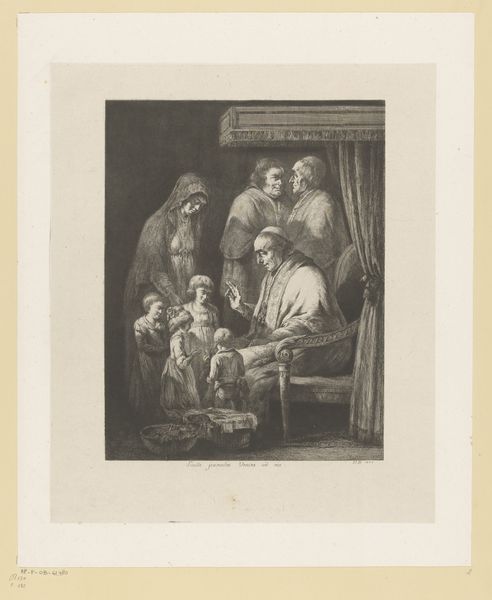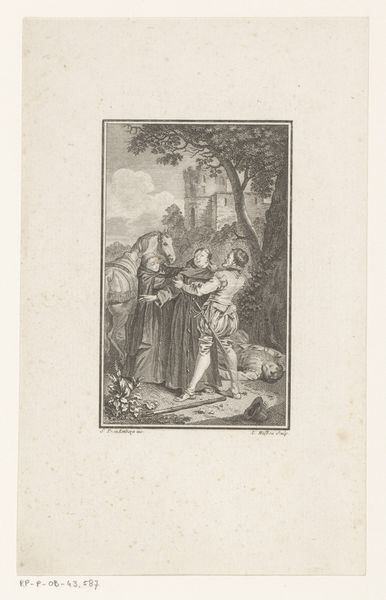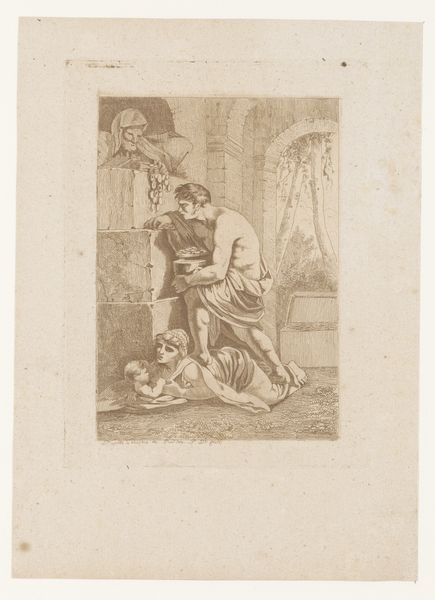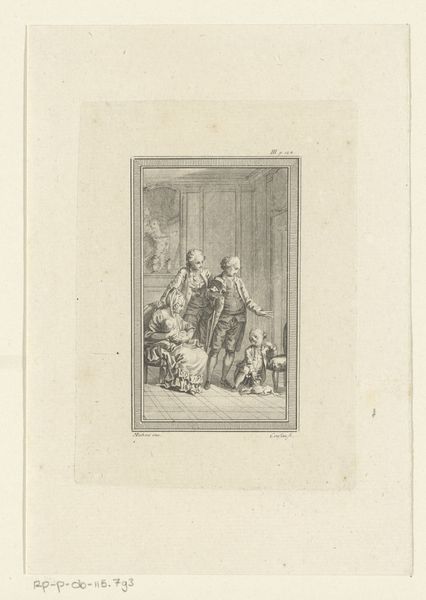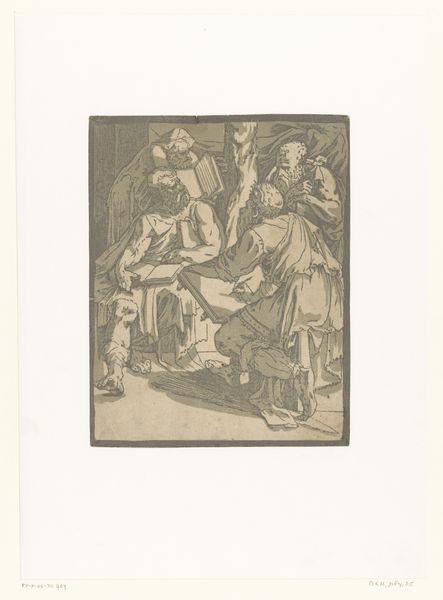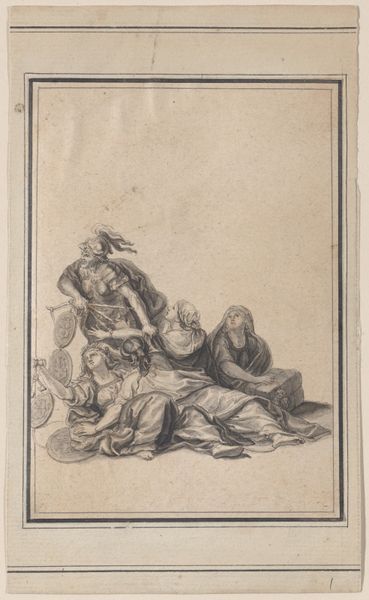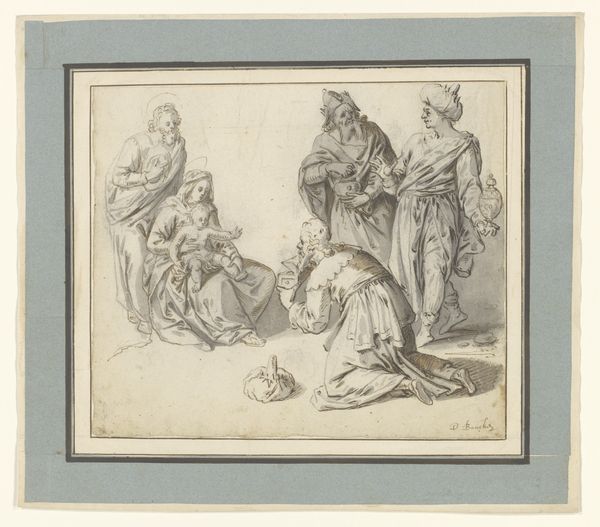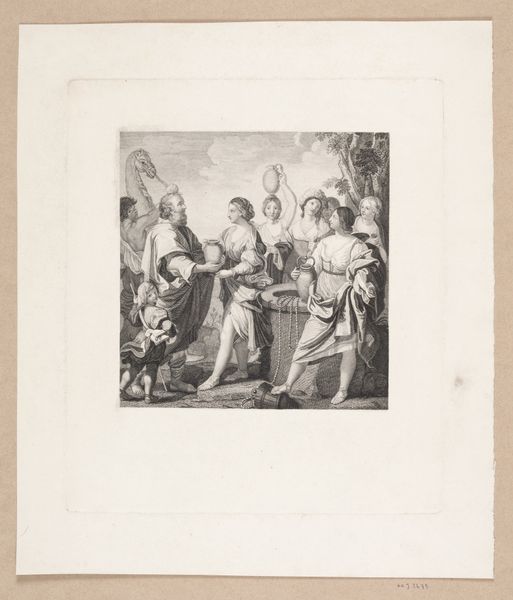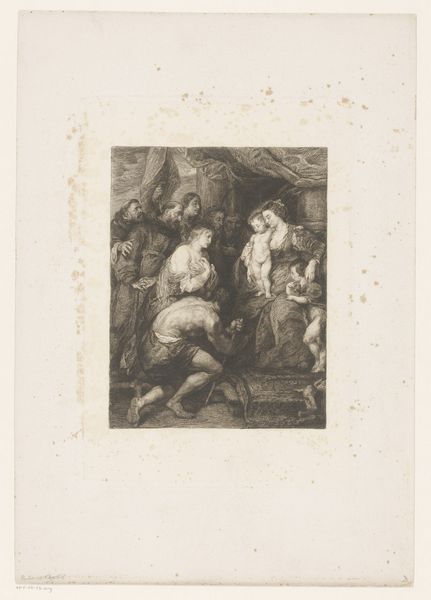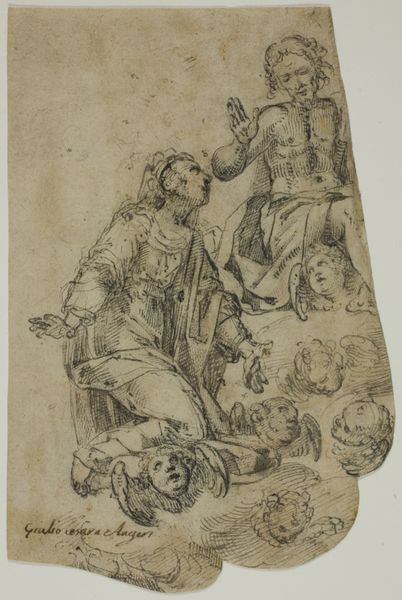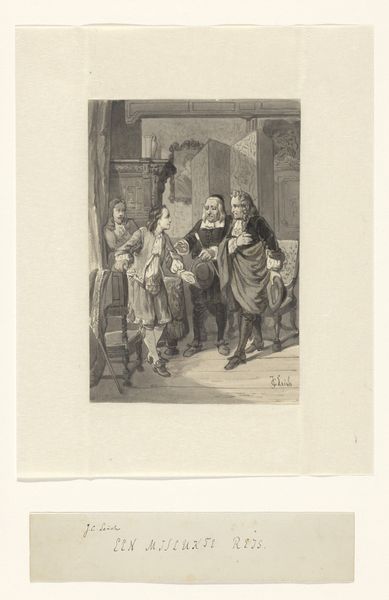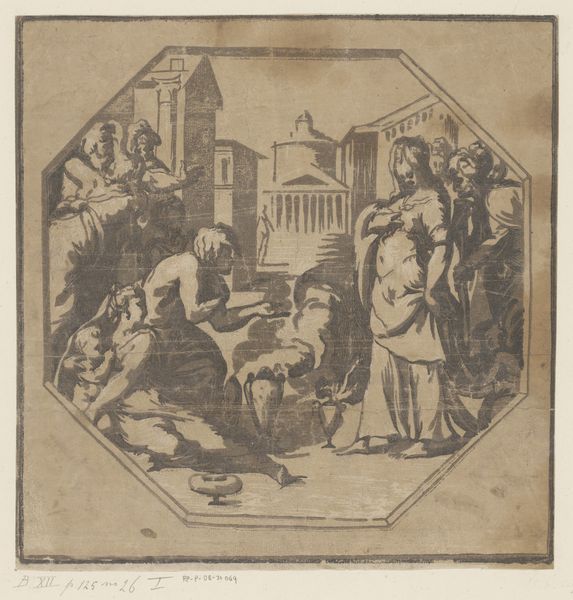
etching
#
portrait
#
narrative-art
#
etching
#
etching
#
figuration
#
romanticism
#
history-painting
Dimensions: height 209 mm, width 169 mm
Copyright: Rijks Museum: Open Domain
Curator: Henri Van der Haert created this etching around 1836. Its title translates to "King Charles I of England Shortly Before His Execution." Editor: There’s an intense emotionality here. The clinging figures, the looming clergyman… you can practically feel the weight of the impending execution. Curator: It's a visual staging of power and piety right before a cataclysmic historical event. We are essentially seeing a snapshot that encapsulates both the private and the public spheres colliding. Editor: Exactly. It speaks volumes about the societal constructs around monarchy. Charles isn't alone; he’s surrounded by figures representing religion and family. It reinforces the ideological justification for his rule. And of course we know how THAT ended up. Curator: The Romantic era saw a revival of interest in these dramatic, emotionally charged historical moments. Artists like Van der Haert tapped into the public's fascination with narratives of heroism and tragedy. In many ways the museum became the people’s new classroom for politics. Editor: This piece almost *reeks* of propagandist narrative. Is he shown as a tyrant deserving to lose his head? No. This is the depiction of a vulnerable man, about to be cruelly undone. I mean look at those weeping figures. Who wants to question divine right in this climate? Curator: The technical skill in the etching—the detail in the costumes, the textures—lends an air of authenticity to the scene. Editor: But doesn’t that detail almost glorify the circumstances? Make it beautiful in some way? Curator: Perhaps. It reminds us how historical narratives are constructed and consumed and displayed even two centuries after the fact. Editor: A potent piece, undeniably. It lays bare how even in depictions of supposed defeat, power dynamics are always at play. Curator: Yes, the artwork compels us to think about how we visually remember the past.
Comments
No comments
Be the first to comment and join the conversation on the ultimate creative platform.
